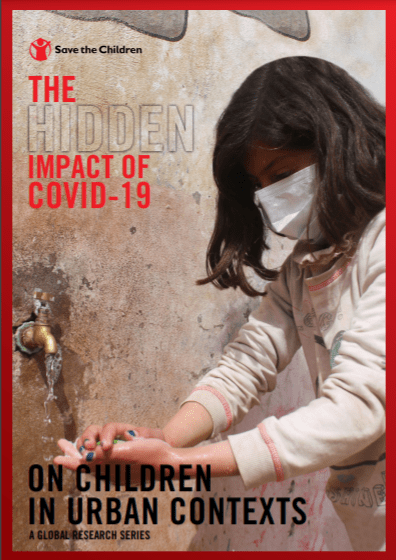The Hidden Impact of COVID-19 on Children in Urban Contexts
Author(s): Sarah Sabry, James Clacherty
Language: English
The characteristics of urban areas increase not only the exposure and vulnerability of their populations to the direct health risks of COVID-19, but also the negative impact of infection control measures. As COVID-19 has spread rapidly across the globe, governments have implemented a range of measures to contain the spread of the pandemic, including school closures, home isolation/quarantine and community lockdowns. These measures have exacerbated inequality in urban areas, disproportionately impacting the poorest and most marginalized children. ‘Currently, 1.6 billion people or 20 per cent of the world’s population live in inadequate housing, of which one billion reside in slums and informal settlements.’ They live in crowded conditions, with limited access to basic infrastructure, services and social protection services. An estimated 300 million of these residents are children.
Save the Children has carried out a global study to understand how the COVID-19 pandemic has impacted children’s health, nutrition, learning, wellbeing, protection, family finances, and poverty – and to identify the needs of children and their families. The research was implemented in 46 countries with 31,683 parents and caregivers and 13,477 children aged between 11 and 17. This brief summarizes the key findings of the impact of COVID-19 on children in urban areas. Survey respondents in urban areas included respondents living in slum as well as non-slum areas. Below is a summary of some of the most significant findings for child wellbeing in urban contexts. They show how children and their caregivers in urban areas have been disproportionately affected by COVID-19.

